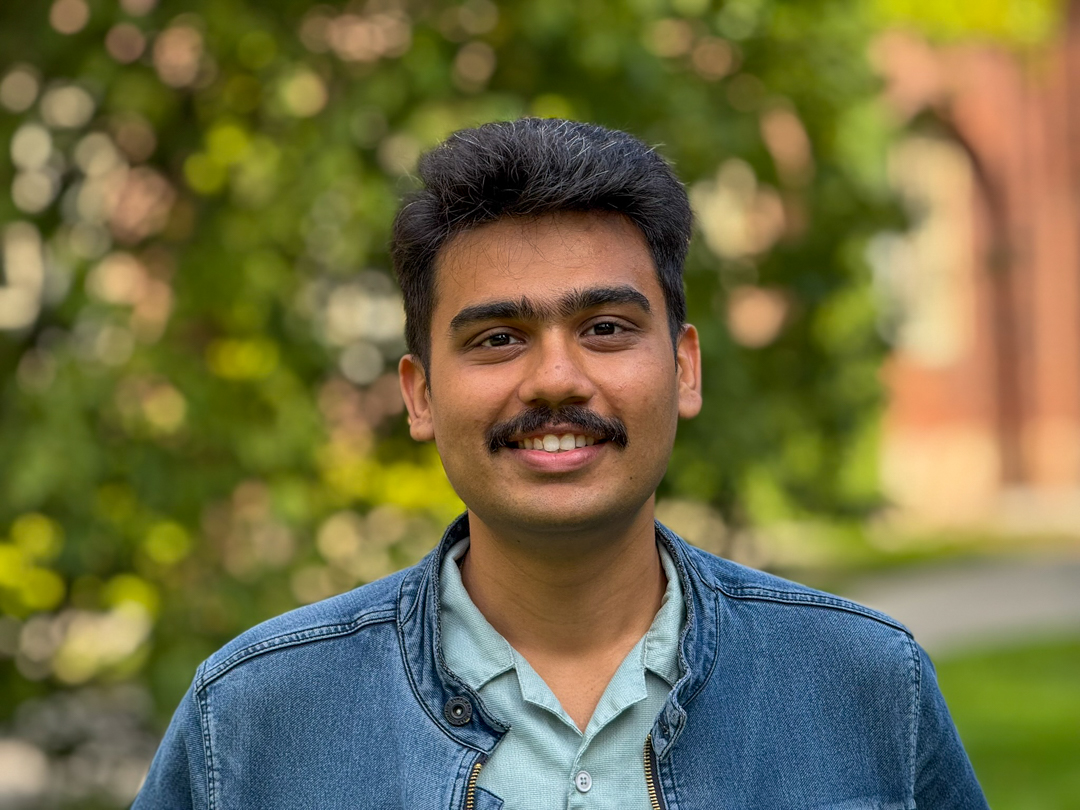Nagaharish
Nagaharish is originally from Bangalore, India. He holds a Bachelor's degree in Mechanical Engineering from Nitte Meenakshi Institute of Technology in Bangalore. He is currently pursuing a master's degree in Aerospace Engineering and his interests include plane spotting, hiking, music, and playing the guitar.

Why did you choose this master's programme at KTH?
KTH is one of the highest-ranked universities globally and is renowned for its strong focus on research and innovation. Coming from an academic background that was more theory-driven, I was looking for a place that emphasized practical, hands-on learning—and KTH offered exactly that. What truly stood out to me was the university's strong connection with industries in Sweden and across Europe. This close collaboration between academia and industry creates exciting opportunities for students to apply their knowledge in real-world settings and be part of cutting-edge projects.
Have you chosen a specialisation track within the programme? Which track and why?
I have chosen the Aeronautics track within the Aerospace Engineering programme. I’ve always been fascinated by aircraft, but for a long time, I wasn’t sure which specific area I wanted to focus on. During my bachelor’s studies, I had the opportunity to take electives in Computational Fluid Dynamics (CFD) and Aerodynamics — and that experience was a turning point. I became deeply interested in how airflow interacts with aircraft surfaces, and since then, I’ve been working as a student researcher in related topics. Choosing the Aeronautics track felt like a natural next step, allowing me to build on that foundation and further develop my expertise in Aerodynamics, CFD, and Flight Mechanics.
What are some of your favorite courses so far?
Some of my favourite courses in the programme so far have been Fundamentals of Flight, Advanced Topics in Aeronautics (Computational Aerodynamics), and Lightweight Design. Coming from a mechanical engineering background, Fundamentals of Flight was especially valuable—it helped me build a strong foundation in aerospace concepts. One of the highlights of the course was a hands-on project where we designed and performed calculations for an electric trainer aircraft, which was both challenging and rewarding.
Computational Aerodynamics was another standout course. It provided practical, hands-on experience with industry-standard software tools, bridging the gap between theory and real-world applications.
Lightweight Design has been an exciting, year-long project course where we design, build, and fly an unmanned aircraft. What makes it truly interesting are the unique flight scenarios the aircraft must be capable of handling—it really pushes your creativity and engineering skills to the next level.
How do studies at KTH differ from your previous studies?
In India, my studies were largely focused on theoretical knowledge, with limited exposure to real-world or industry applications. At KTH, the approach is much more hands-on and application-oriented. The courses are designed not only to deepen your theoretical understanding but also to connect that knowledge to real-world scenarios. For example, in Lightweight Design, we work on designing, building, and flying an unmanned aircraft. Other courses include projects like building a MATLAB flight simulator to explore flight mechanics or using industry-grade software for computational aerodynamics. These practical experiences make learning more exciting and meaningful—and they constantly challenge me to think creatively and push beyond my comfort zone.
What are the best aspects of your programme?
One of the best aspects of the programme is its well-structured design. It begins with core courses that help you build a solid foundation and gain clarity before choosing your specialisation. This flexibility allows you to tailor your studies based on your interests and career goals. Another highlight is the quality of teaching—courses are led by highly experienced professors and industry experts, ensuring a great balance between academic depth and practical relevance. There is also a strong connection between academia and industry, offering opportunities to work on real-world projects and gain hands-on experience that truly enhances your learning journey.
How is student life in Stockholm?
Student life so far in Stockholm has been vibrant, international, and full of opportunities. The city beautifully blends history with modernity, offering a high quality of life, excellent public transport, and access to nature all around. As a student, you’re part of a diverse and welcoming community, with countless events, student unions, and activities to get involved in. Whether it's exploring museums and music festivals, going for a hike, or simply enjoying a fika with friends, there’s always something happening. Stockholm is also a hub for innovation and technology, which creates an inspiring atmosphere for both academic and personal growth.
